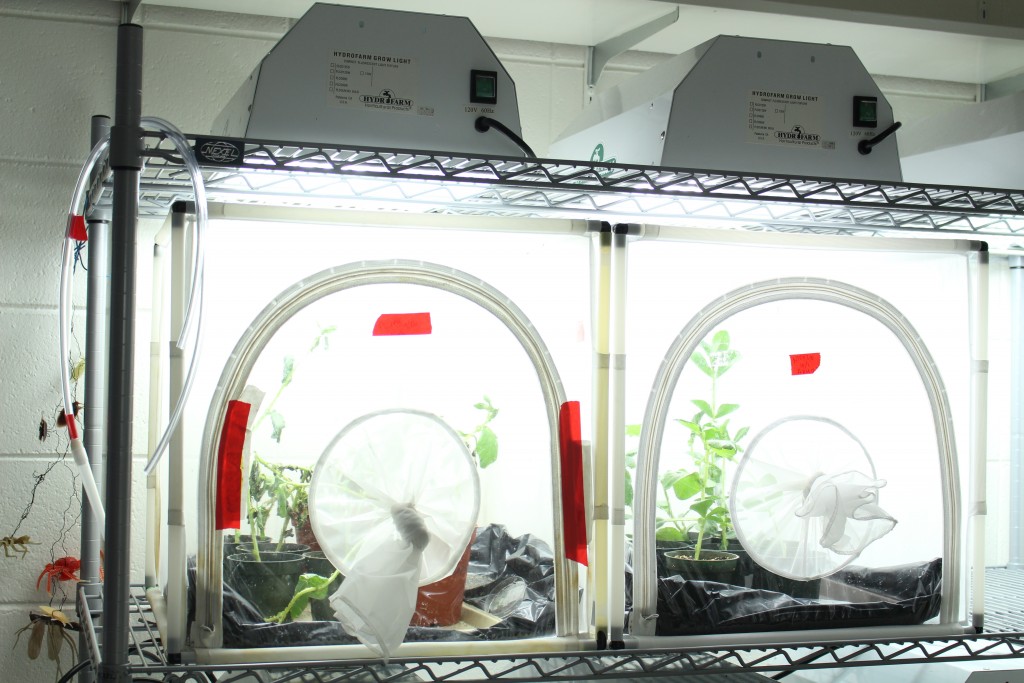Spring 2017:
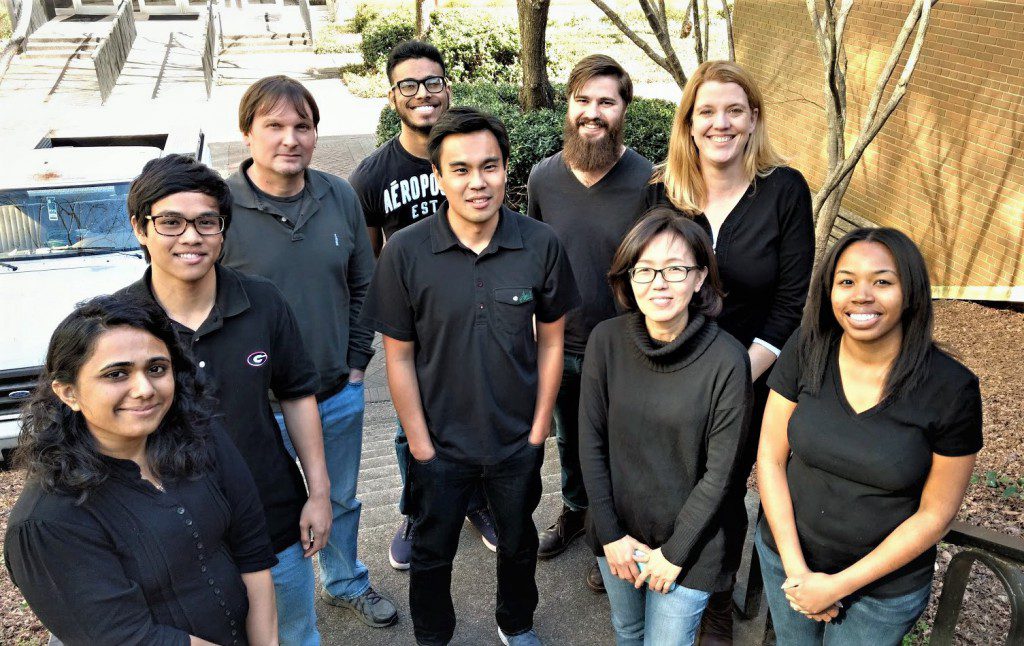
Group photo of lab
Dorbin Abendano– Senior Microbiology student second to left
Bryan Kamalaker– CURO student back center, black and white shirt
Fall 2015:
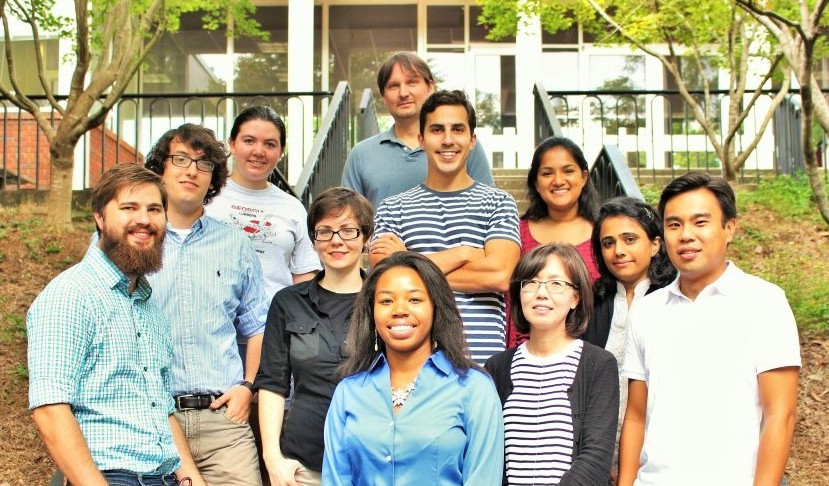
Group photo of lab
Pooja Patel– Senior student back right, pink shirt
Summer 2015:
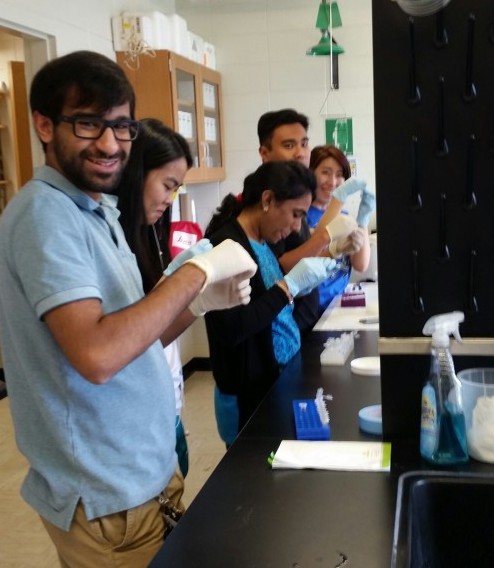
Lab Family working hard (Left to right: Varin, Nhu-y, Vilas, Clesson, Sally)
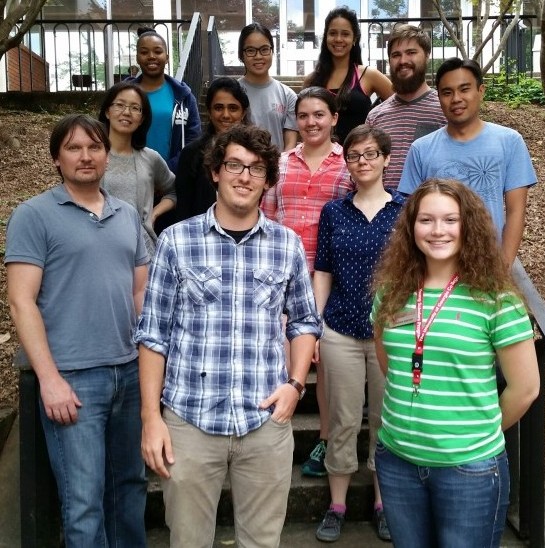
Group photo of lab
Jordan Harris– YSP student front right, green shirt
Yeidymar Sierra-Moya– REU student back right, black shirt
∴¤∴¤∴¤∴¤∴¤∴¤∴¤∴¤∴¤∴¤∴¤∴¤∴¤∴¤∴¤∴¤∴¤∴
Lab Infrastructure:
Greenhouse
The Oliver Lab has a greenhouse in the complex on Riverbend road. The main function of our greenhouse is to grow fava bean (Vicia faba) plants that serve as the food source for pea aphids.
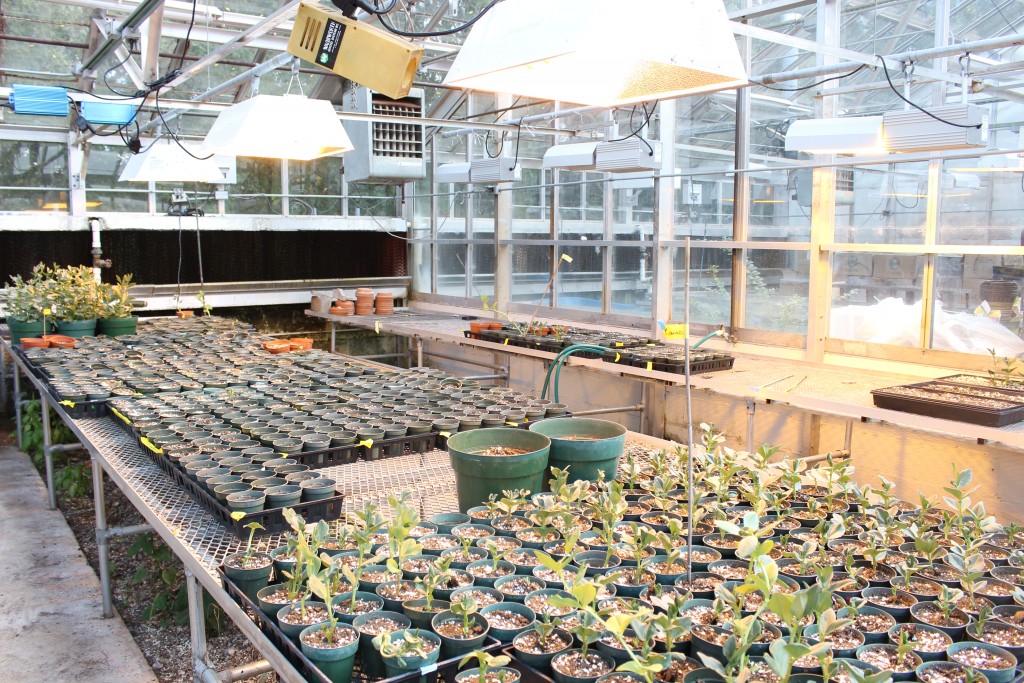
Fava Bean Plants
Pea aphids can feed on fava bean, alfalfa and clover. In our lab we use fava bean as a food source.
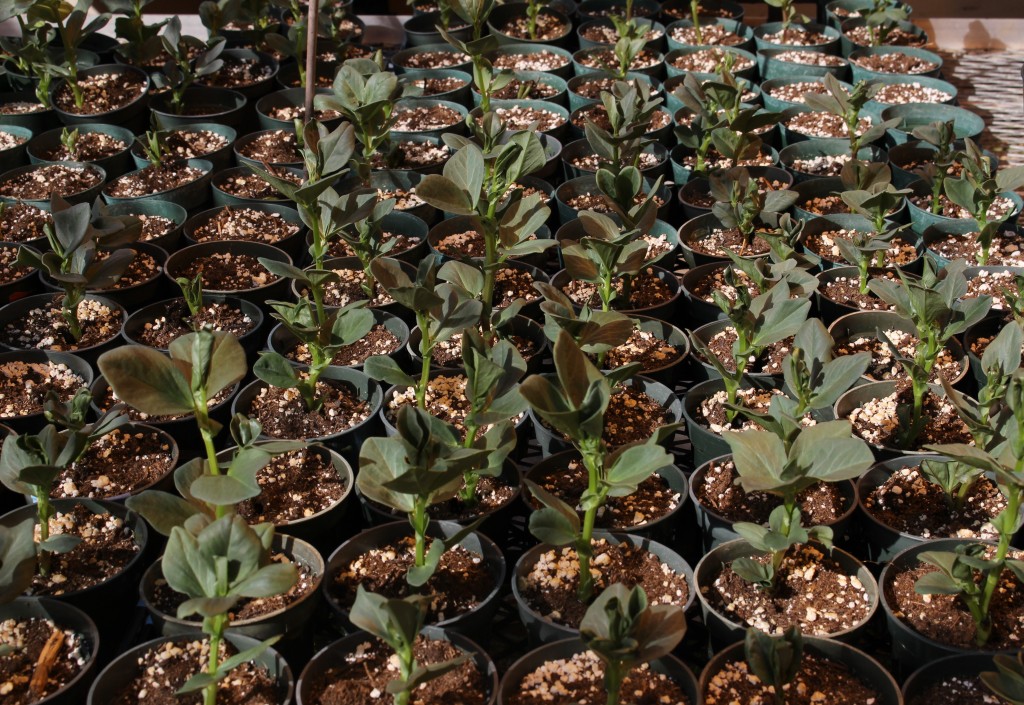
Aphid Rearing
The Oliver lab maintains hundreds of aphid clonal lines in Percival incubators in our laboratory space in the Biological Sciences Building. All lines are started from single, parthenogenetic females and reared under long day-length conditions to maintain asexuality. Clone status is verified using microsatellite markers and symbiont compositions using diagnostic PCR. Experimental lines with specific symbionts/aphid genotypes are created via a) transinfection or b) selective antibiotic curing for use in biological assays.
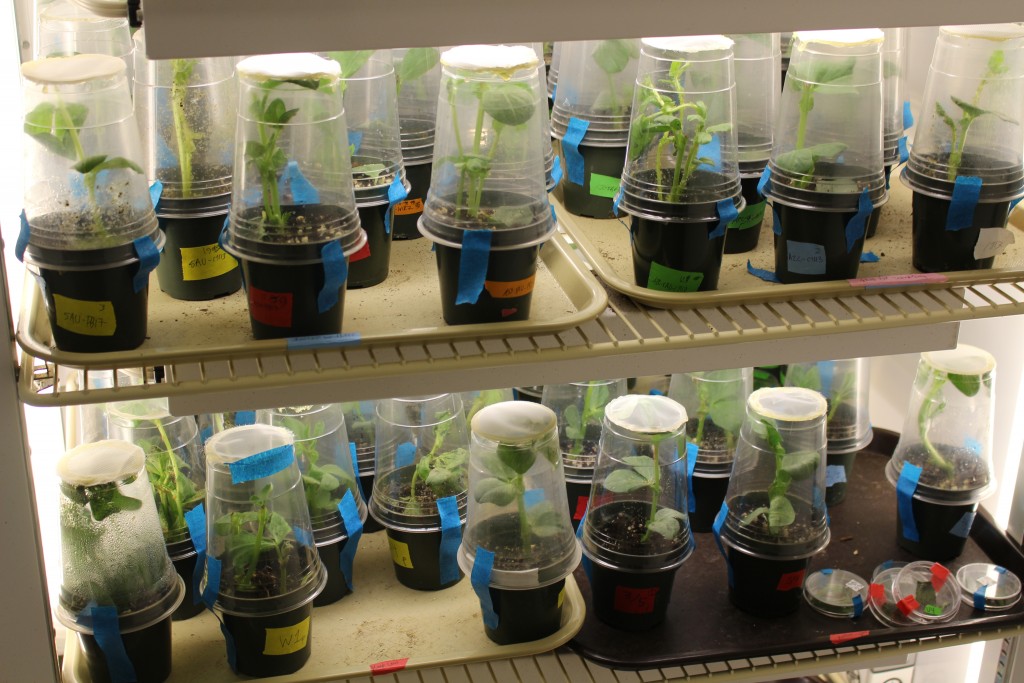
Wasp Rearing
The Oliver lab maintains the two most common wasp species that attack the pea aphid; Aphidius ervi and Praon pequodorum. Both wasp species are aphidiine braconids and are solitary endoparasitoids –meaning that adult females inject an egg into the aphid hemocoel and the resulting juvenile develops within a living aphid for about one week before eventually killing the aphid and pupating within (A. ervi) or below (P. pequodorum) the aphid exoskeleton.
